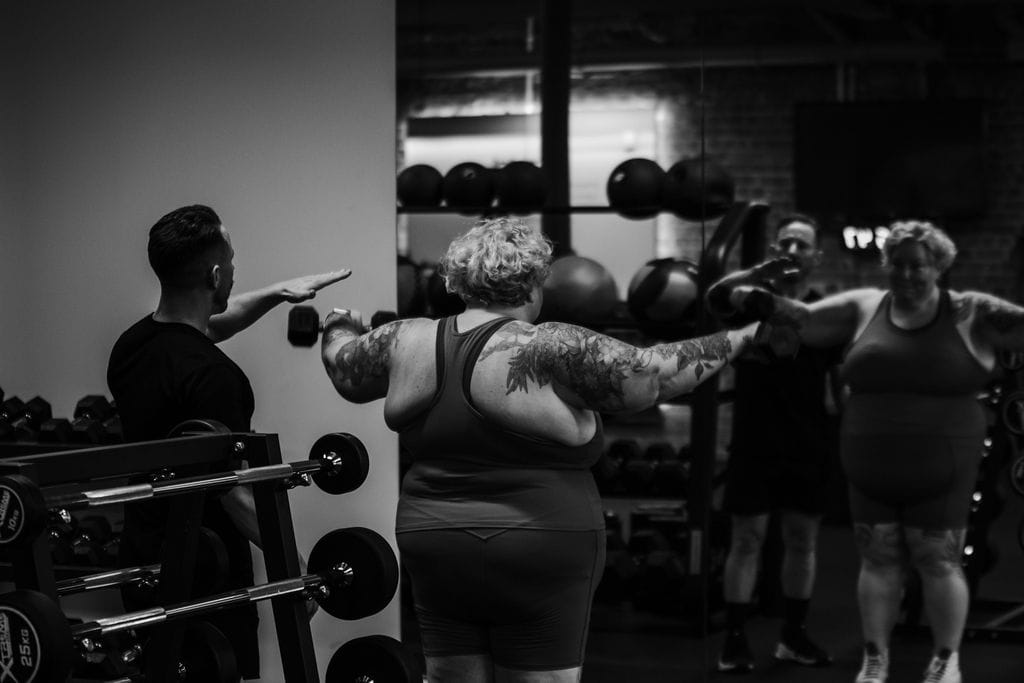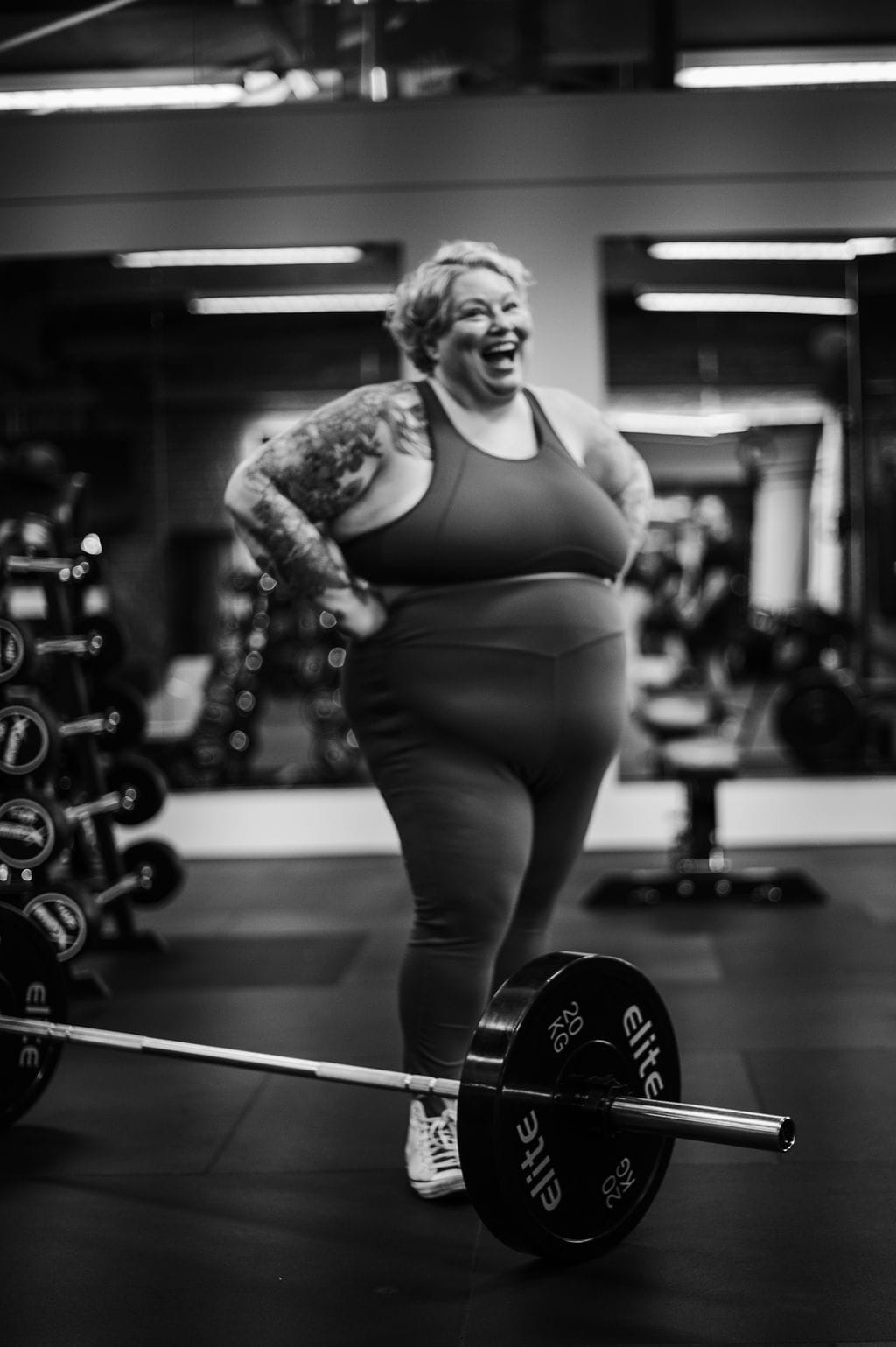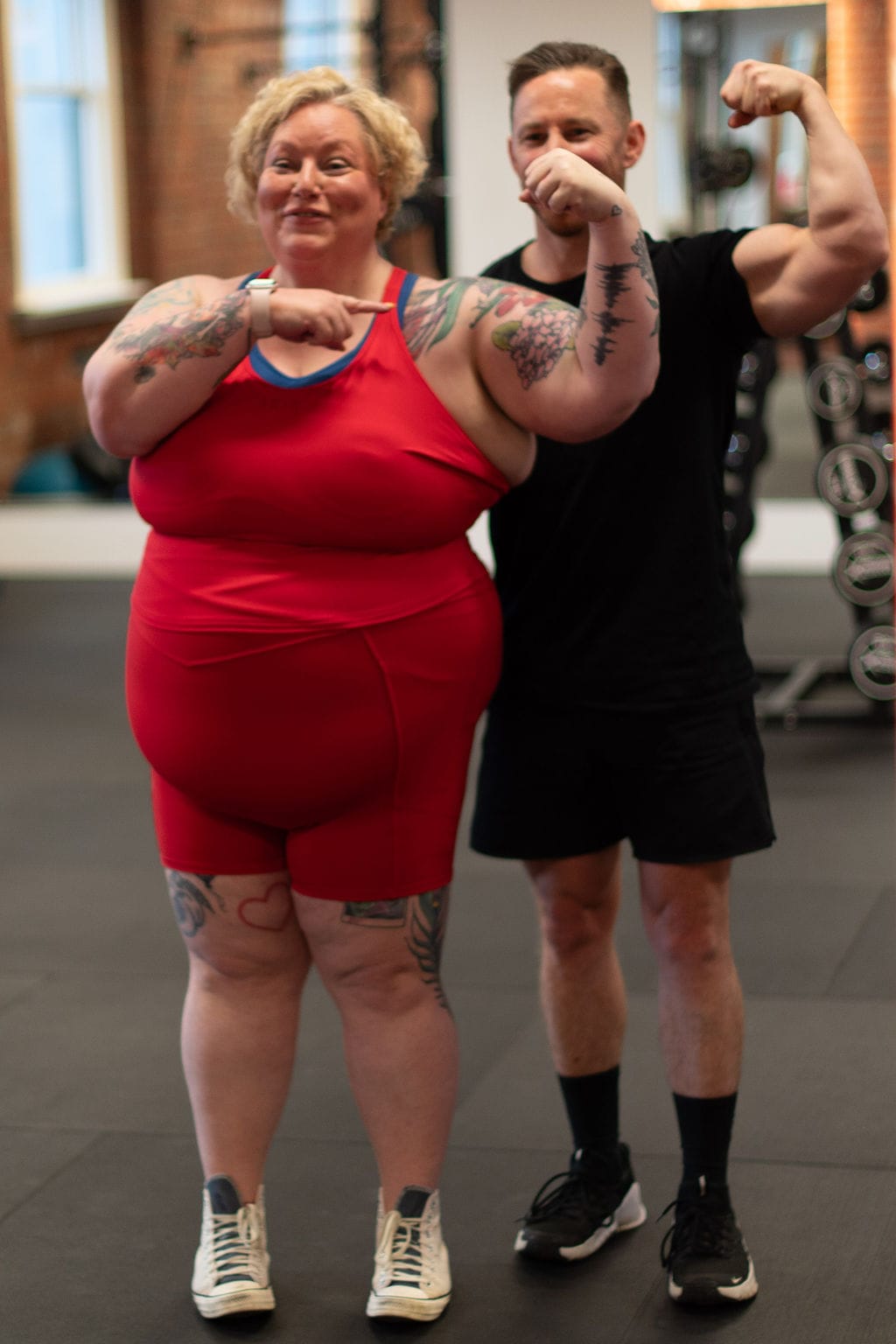Am I going to get bulky?
Recently, I (Megan) was chatting with a woman and—as often happens when I’m around—the conversation turned to strength training.
“I really want to get into it,” she said, “but I don’t want to get bulky.”
Bitch, please, said the voice in my head.

Here’s the thing: getting bulky is hard. It takes serious effort, So Much Protein, and a very specific kind of training. I’ve been lifting consistently for four years—actively trying to bulk up—and I’m nowhere close.
But I get the hesitation. Most of us have spent our lives being told that thinness is the most desirable thing—and that message has only gotten louder in the past couple of years. We’re told to do cardio, lift small weights, and aim to be “toned.” The point isn’t to be strong, or capable, or mobile—it’s to be small.
One of the best things about strength training is that I no longer particularly care what my body looks like. I’m far more interested in what it can do. I love that my body can pull off feats of strength way more than I care how it looks in jeans.*
There’s a TikTok audio that shows up in my feed at least once a week:
“I don’t want to be strong like men who look pretty. I want to be strong like bitch that fight bears in the forest.”
The algorithm Gods do deliver sometimes. When I think about how I want to look, it’s this: “I want to look like someone who could lift a car off a stranger.”

Of course, like everyone, some days I have bad body days. Some days I feel confident. Most days, you’ll find me in a tank top because I’m currently deeply enamoured with my shoulders and the definition in my traps and delts—and I love showing them off. But for the first time, maybe ever, my body image isn’t defined by what size clothes I wear or what other people think about it.
Of course, there have been aesthetic changes. My shoulders are broader now, which makes my waist look smaller—so I’m more curvy than I used to be. But those changes are just byproducts of my time in the gym, not the reason I go. What really matters is this: being in the gym and learning that my body isn’t a problem to be fixed—not with workouts, not with restrictive diets, not with supplements sold to me on Instagram—feels like liberation.
Carl and I can often be found in the gym, striking poses in the mirror like the gym bros we so clearly are. But for me, it’s not really about how I look—at least, not in the way it might seem. It’s about the quiet shock of discovering, in my forties, that this body I’ve spent a lifetime trying to change is actually good at something: growing muscle.
If I want to get leaner now, it’s not because I’m chasing an imaginary ideal—it’s because I want to see the work. I want the effort to show.

So no, you’re not going to get “too bulky.” Not without serious intention and effort. And even if you did—honestly, would that be such a bad thing? Babygirl, put down the 4kg dumbbells and grab the 7s. I promise, you’re stronger than you think.
Strength and size aren’t the same thing—and the way you train for one can be very different from the other. That’s where Carl comes in.
Here’s Carl: Thanks Megan. “Am I gonna get bulky?” is a question I still hear more often than you'd think. And not just from women. Men ask too. My standard answer? “Let’s cross that bridge if or when it becomes an issue.” Spoiler: it very rarely does.
I’ve been lifting most of my adult life. I even spent 4 years doing competitive bodybuilding, following a hypertrophy program to the letter, tracking every macro, training like it was a full-time job. The result? I got… bulky-ish.
The point is, it’s not something that happens by accident. It’s something you have to train for with intention, consistency, and a whole lot of food.
Resistance training isn’t just about muscle size. It can be tailored to a bunch of different outcomes, building strength, improving endurance, enhancing power, supporting mobility, or yes, growing visible muscle. Different goals call for different approaches: sets, reps, rest periods, tempo. A good coach will program based on what you actually want, not what Instagram thinks you should want.
Here’s a quick breakdown of how training can shift depending on the goal. Think of these less like strict categories and more like sliders you can adjust:
1. Muscular Endurance
The “I want to feel fitter and last longer” category.
- Reps: 12–20+
- Sets: 2–4
- Rest: 30–60 seconds
- Load: Light (40–60% of 1RM)
- Best for: Runners, cyclists, beginners, or anyone who wants to move better and feel less wrecked by everyday life.
2. Hypertrophy (Muscle Growth)
This is the one people are usually worried about when they say “too bulky.”
- Reps: 6–12
- Sets: 3–6
- Rest: 30–90 seconds
- Load: Moderate to heavy (65–80% of 1RM)
- Tempo: Slow and controlled to increase time under tension
- Best for: Building visible muscle—or as I like to call it, “glutes like Megan’s.”
3. Max Strength
Heavy. Rest a lot. Make weird noises.
- Reps: 1–5
- Sets: 4–7
- Rest: 2–5 minutes
- Load: Heavy (85–100% of 1RM)
- Best for: Powerlifters, athletes, or anyone who just really wants to lift impressive things off the floor.
4. Power
Move weight fast and explosively, like a superhero.
- Reps: 1–6
- Sets: 3–5
- Rest: 2–5 minutes
- Load: Light to heavy depending on the movement
- Best for: Athletes, older adults (yes, really), and anyone looking to move with more speed, coordination and control.
Most people start with something endurance or hypertrophy based to build a base: better movement, better control, fewer injuries. From there, you can dial things up depending on what you enjoy and what your goals are. It’s not a one-size-fits-all thing.
And if you do want to put on more muscle, if you’re actively chasing strength, size, shape, great! That’s totally possible with the right kind of training, recovery, and nutrition. But again: it’s not going to just happen because you accidentally picked up the 10kg dumbbells.
Strength training is a tool. What it builds depends on how you use it.
- The irony is that, thanks to all the hip thrusts, I look great in jeans now. My glutes are spectacular.
Cool shit we* saw this week
(Megan) My ‘tiny little joy’ of the week: a 17 year old saying I am cool. That means I am officially cool. Right?
(Megan) Does gaining muscle have a commensurate effect of fat loss? We’re not here to talk about fat loss (you do you, boo), but this study would suggest that if that’s your bag, growing muscle would help: “Importantly, the stimulation of muscle hypertrophy is sufficient to trigger fat loss and, particularly in animal models, improvements in glucose homeostasis as secondary effects.” For those of us that don’t read medical studies over breakfast: an instagram post explains.
(Megan) a couple of weeks ago, carl mentioned he’s programming me pylos. This is impressive:
(Megan) I live in fear of someone thinking that because I wear a fitness tracker and work out, that I am like the people who microdose snake venom, but also: The latest research (2025) suggests that weightlifting or other forms of resistance training are the most effective way to reawaken youth-supporting molecular activity in aging muscles.
(Megan) An apple and peanut butter is an elite snack.
*Poor Carl is sick this week - excellent timing for the competition ins two weeks! - so all mistakes Megan's
